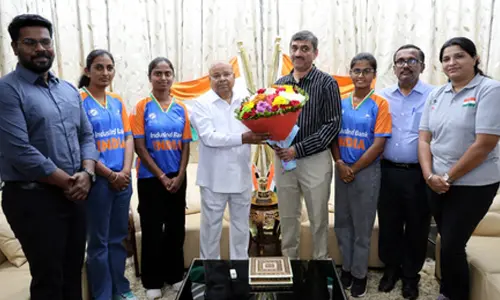Bhutan lit fest: Magic, myths and fertility
Thimphu, May 23: Think of art at the dawn of civilization. What comes to mind are cave paintings, magic, myths and fertility rites and these four elements have played a profound role in preserving cultural identities.
Thimphu, May 23: Think of art at the dawn of civilisation. What comes to mind are cave paintings, magic, myths and fertility rites and these four elements have played a profound role in preserving cultural identities of pre-modern period, said a noted art historian at the ongoing Mountain Echoes festival here.

"When you think of art in pre-modern society, you think of a civilization that is 1,000 years old, like the Indus Valley civilization. Then you see cave paintings, totems, magic and myths and figurine structures that depicted fertility," said curator and historian Alka Pande.
"These elements formed the basis of using art as a medium to represent a civilsation and preserve culture," she added.
Speaking at a workshop "ABC of Art: Appreciating, Buying and Collecting", Pande also pointed out how art became a tool in the preservation of religion through various metaphors and designs that today are a representation of that religion.
"During the pre-modern period, art was the preserve of the religion and the royalty, which were its main patrons," she said.
"So the face of many religions, be it Hinduism, Islam, Buddhism or Christianity - has found its representation through art," she added, citing the biblical scenes in churches, calligraphy in Islam or depiction of scenes from the Ramayana or the Mahabharata as different ways of preserving culture through art.
Pande also said that at a time when the entire world was dotted with this "cultural revolution", Egyptian, Greeks and Romans brought in the culture of bringing human bodies into art.
"If you look into Egyptian paintings, they were never real human beings, but someone from the other, surreal world who weren't looking directly at you. There was depiction of life in upper and lower Nile through these paintings," she said.
"Whereas Greek art was about life and death, Roman art had huge infusions of human spirit that comes in," she added.
It was with these developments, that "realism" in art began to take over, with the Greeks introducing the ever-popular "S" pose which is formally known as "Contrapposto".
"It was when this classic pose, where a figure stands in such a position that it gives slight s-curve to the body became popular that art started to become a way of life," said Pande.
As these developments led to the rise of many modern and contemporary artists on the Western side of the globe, in the East, Indian art aesthetics were drawn from "Natya Shastra" - the first major text that dealt with music at length, said Pande.
"It is the 'rasa'(flavour or juice) theory of Indian aesthetics that says art is beautiful only when it is able to transfer the essence of an emotion from the artists to the viewers," she said.
"Only if you understand art history, you can become a true art connoisseur. Appreciating art comes from truly understanding your subject and the emotions associated with it," she stressed.
(IANS)
Next Story
















